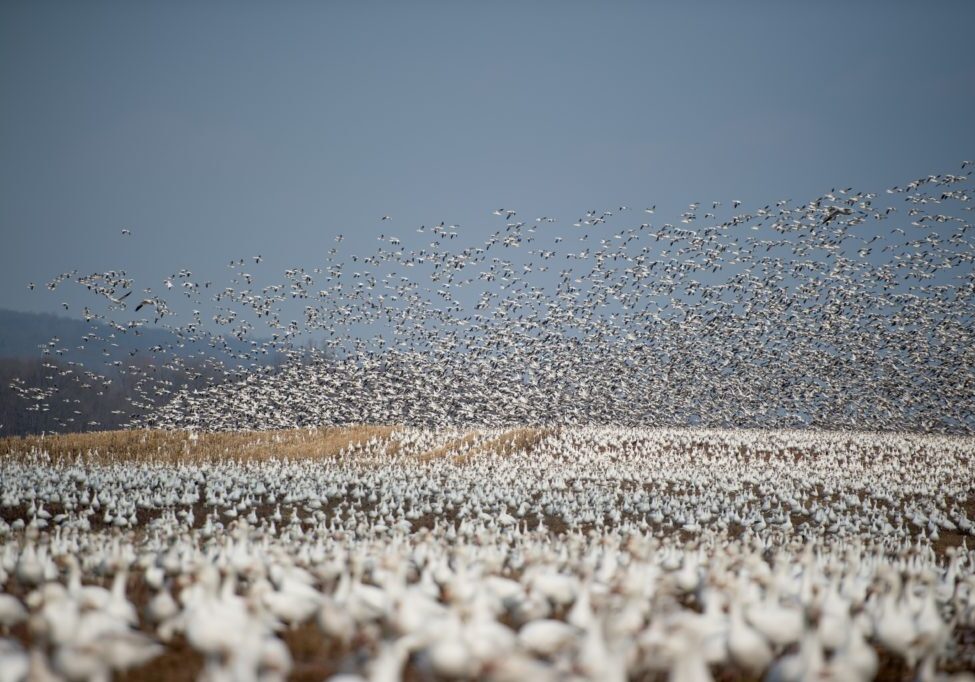THREATENED AND ENDANGERED SPECIES LIVE IN THE SACRAMENTO VALLEY
California rice fields have become increasingly important surrogate wetlands habitat for many wildlife species, including large numbers of migratory waterbirds, wading birds and shorebirds traversing the Pacific Flyway.
Many special-status avian species, including some that are threatened, have adapted to cultivated ricelands for rest, feeding and reproduction. Rice fields, some of which may be flooded for as long as eight months each year, have become essential to the survival of many such species.

The Sacramento Valley encompasses habitat for 50 percent of the threatened and endangered species in California, as noted in the Northern California Water Association’s Integrated Regional Water Management Plan document. As the water association observed, this habitat encompasses riparian zones and wetlands along the Sacramento and Feather rivers and other significant tributaries and agricultural drains, wildlife refuges, and rice fields that host food sources and habitat for a variety of species.
The water association’s report noted that partnerships among agricultural land owners, water users and waterfowl interests “will continue to play a critical role to assure good water quality, the protection of a broad array of aquatic and terrestrial species, and reliable and affordable water supplies for agriculture and waterfowl purposes.”
THE CENTRAL VALLEY’S 31 “SPECIAL STATUS” SPECIES
Wildlife scientists have determined that about 230 species — including 100 species of waterbirds — along with 27 species of mammals and 15 species of amphibians and reptiles make use of Sacramento Valley rice fields. Of these, 31 are considered “special-status species” — that is, the U.S. Fish and Wildlife Service, California Department of Fish and Wildlife, or the National Marine Fisheries Service considers them struggling, threatened or endangered.
The National Audubon Society has designated Sacramento Valley wetlands encompassing tracts in Sutter, Butte, Colusa and Sacramento counties among several of California’s “important bird areas” — and considers it “one of the most significant areas of wetlands habitat in the nation.”
California ricelands serve as habitat for a wide range of common species that rely on the Sacramento Valley. However, it is important to recognize that these same fields also serve as crucial habitat for endangered species, threatened species, and species of special concern. These species include the giant garter snake, Tule Greater White-fronted Goose, American White Pelican, Black Tern, Lesser and Greater Sandhill Crane, Burrowing Owl, White-tailed Kite, Northern Harrier, and Tricolored Blackbird.

American White Pelican, Burrowing Owl 
Lesser Sandhill Crane, White-winged Black Tern 
White-tailed Kite, Black Terns
HOW YOU CAN HELP
The Waterbird Habitat Enhancement Program (WHEP) has been instrumental in adapting agricultural lands for use as habitat for waterbirds, shorebirds and waders. A partnership among Audubon California, Point Blue Conservation Science, the California Rice Commission, the California Ricelands Waterbird Foundation, independent rice growers and the United States Department of Agriculture’s Natural Resources Conservation Service (NRCS) created WHEP in 2011.
WHEP allocates funding to help rice producers adopt and apply conservation practices by setting aside and maintaining shallow water wetlands, mudflats, nesting islands and other associated wildlife structures as breeding and wintering habitat for shorebirds, wading birds, and waterfowl.
The California Ricelands Waterbird Foundation welcomes philanthropic support to help underwrite habitat creation and maintenance projects in cultivated Sacramento Valley ricelands. The annual cost for an acre of habitat enhancement is about $50. A donation of $500 to the California Ricelands Waterbird Foundation supports 10 acres of waterbird habitat for a year. Become a Habitat acre sponsor.
Please consider using social media to help spread the word about the valuable work of the California Ricelands Waterbird Foundation and our partners in this critically important mission. Thank you.










